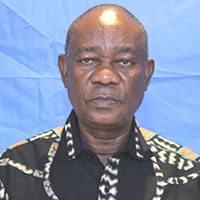location and size
The Ketu North District is one of the 25 municipal and districts in the Volta Region of Ghana. It is located between latitudes 6o 03”N and 6o 20”N and longitudes 0o 49’E and 1o 05’E. It shares boundaries with the Akatsi District to the North and the Republic of Togo to the East. To the South, it is bounded by Ketu South district. The district capital (Dzodze) is about 80km from Ho the regional capital. The district has a surface area of about 754 square kilometers. Figures 1.1 and 1.2 show the district within the national context and its administrative divisions respectively
Topology and drainage
Relief and Drainage
In terms of relief, Ketu North District is relatively low lying with altitudes around 66 metres. The plain nature of the terrain makes movement within the district easy. The Drainage of the district is towards the South and is dominated by several seasonal streams that flow in wide valleys between Ohawu and Ehie to end in the swamplands of Afife. The major rivers include Kplikpa and Tsiyi. There are about 6 large fresh water reservoirs (dams) -Ohawu, Kporkuve, Dzodze, Tadzewu, Dekpor-Adzotsi and Larve as well as a few small community dugouts in the district.
Climate and vegetation
Climate
The District experiences the dry Equatorial type of climate. The average monthly temperatures vary between 24? and 30?, which are generally high for plant growth throughout the year. The mean annual rainfall for the District is around 1,270mm. The rainfall is of double maxima type occurring from April to July and September to October. The dry season, which is mainly dominated by the dry harmattan winds, extends from December to February in the district. Generally rainfall in the District is considered low and erratic particularly during the minor season
Vegetation
The original vegetation of the District is Savannah woodland made up of short grassland with small clumps of bush and trees as well as Mangrove forests in the marshlands are found in the District. However, the extensive farming activities in the district have, over the years, reduced the natural vegetation. Amid these are cultivated holdings of cassava, maize, coconut, oil palm, and black berry trees and the occasional baobab and fan palm. The decimation of the vegetation by population pressure may have adversely affected rainfall in the district.
Geology and soil
The area of the district is underlain by 3 main geological formations. Viz the Dahomenyan formation to the North made up of soils such as Tropical Grey and Black Earths, the Regosolic Groundwater Laterites, the Recent Deposits of the littoral consisting of marine sands and the Tertiary formation comprising Savannah Ochrosols for its soil type. These soil types are suitable for the cultivation of different types of crops.
Date Created : 11/29/2017 3:20:37 AM




 facebook
facebook twitter
twitter Youtube
Youtube TOLL FREE 0800 430 430
TOLL FREE 0800 430 430 +233 593 831 280
+233 593 831 280 GPS: GE-231-4383
GPS: GE-231-4383 info@ghanadistricts.com
info@ghanadistricts.com Box GP1044, Accra, Ghana
Box GP1044, Accra, Ghana